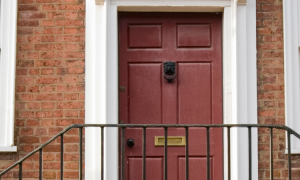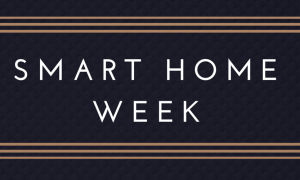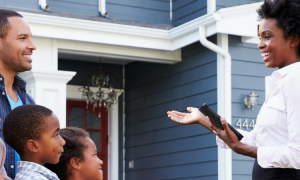In the first post of the series, we defined the smart home and explored how home owners are using smart home devices to secure their homes. Now, we’ll take a look at where you can get started and how to ensure that these devices make your home a smarter, more secure haven.
Getting smart security
The burglary rate in the United States has dropped by nearly half over the past 25 years, but homeowners don’t seem to have fully absorbed that finding. In a survey by security company Honeywell, published late last year, more than two-thirds of Americans — and 72% of females — do not feel totally safe in their homes.
Smart home technology can not only make homes more secure, it can reduce homeowner anxiety by providing real time information and displays.
Some useful products have become very affordable, and prices will drop continuously over the next few years as economies of scale take hold, according to Bruce Snell of Intel Security.
Take the August Home Smart Lock, for example. This device can be installed easily by a minimally handy homeowner, works with existing lock hardware, and retails for only about $200. With it, consumers can create virtual keys for the whole family and temporary keys for guests. It also will do things like automatically unlock your door when you approach the threshold with your smart phone in your pocket. The Smart Lock can be combined with a related product, the Doorbell Cam, which records everyone who pushes the doorbell.
“What we provide is a whole new idea on how to control your front door,” said Kathy Sanders, chief marketing officer for August Home.
She pointed out a few uses. A big one provides peace of mind for parents who can learn precisely when the kids get home. The system can also notify users when a package is delivered and even allow access for the deliverymen.
“Now I feel comfortable letting someone in to put a package inside the front door,” said Sanders. She can see who is making the delivery, watch as they go into the house, and make sure they exit after leaving the package inside.
“There were 197 million packages delivered between Black Friday and Christmas last year,” said Sanders. How many times did recipients have to go to the post office or Fedex or UPS office to pick up?
[new_royalslider id=”3″]
Housing industry can use it too
The system can be used by listing agents to let a colleague show a house when they’re unavailable. And Airbnb owners can use it to provide access for visitors without having to sit around a Starbucks waiting to meet up with them.
Like many new tech toys, it can take some time to get comfortable with smart home devices, but adoption is proceeding apace, according to Lindsey Turrentine, editor at CNET.
“The whole category is exploding,” she said. “We’ve seen a whole lot of small devices get very popular very quickly.”
Sanders points out that smart security can add a whole layer of comfort for people who worry about break-ins, especially when they’re away for a while.
“Now you don’t have to worry. Just go online and you can see if your house is safe,” she said. “That’s peace of mind”.
Little danger from hackers
Some consumers could be wary of high-tech security. Couldn’t miscreants hack into the system, opening doors electronically? That’s possible, but unlikely, according to Intel Security’s Bruce Snell.
For one thing, “You can change passwords easily,” he said. That would make your system a moving target.
For the most part, according to Sanders, most criminals won’t go to the trouble of trying to hack into your system.
“If they really want to get into your home, they’ll throw a brick through a window,” she said.
Next, we’ll discover how sellers are using smart homes as a selling point and determine what the return on investment is for smart home technology.






